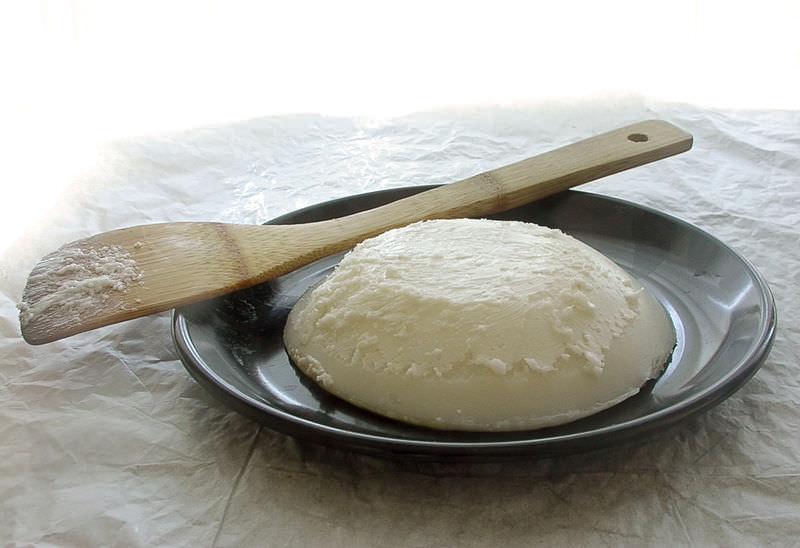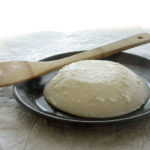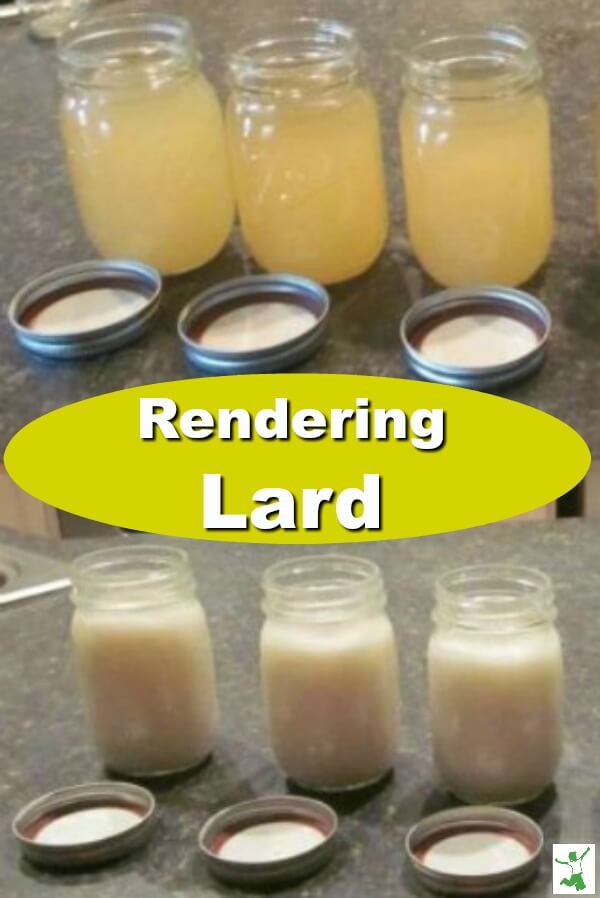Easy method to render pastured lard at home as a traditional way to add a healthy fat loaded with Vitamin D to your family’s diet.
More people are waking up to the old-time notion of how cost-effective and healthy it is to render lard.
Yes, lard!
Lard is a healthy, traditional fat from pigs that can be used to greatly enhance the flavor and nutrition of your home cooking and baking. Contrary to popular belief, lard does not make you fat. Perhaps the fact that lard is traditionally used for making pie crusts and eating too much pie will indeed make you fat is where the negative connotation comes from.
Animal fats such as chicken, goose, duck, tallow, and lard have nourished Traditional Cultures for centuries. The key is to source quality from healthy animals living in their natural environment outside.
The most nutritious and best quality lard is leaf lard, which is the fat around a pig’s kidneys. It is best to render lard once you have located a quality, pastured pig farmer in your local area. Lard contains high amounts of vitamin D when the pigs are allowed to be outside in the sunlight. Locating a source for pastured pork, then, is of primary importance to make sure you render lard of high nutritional quality.
The pork “cracklings” that are left over after rendering the lard can be placed on a cookie sheet in a warm oven overnight to dry out. They make a great snack alone or topping for salads!
Lard: A Healthy Fat Used for Millennia
Most people don’t realize that McDonald’s used beef tallow, which is very similar to lard, to fry its french fries. This all changed about 30 years ago in favor of partially hydrogenated fats which caused the unfortunate switch to these very unhealthy Factory Fats!
When I render lard, I freeze it in one-quart containers for easy storage and convenient access for cooking. One pound of leaf lard will render approximately 1 pint of lard.
Animal fat imparts valuable nutrition and wonderful flavor to roast vegetables. The reason many kids won’t eat veggies is that they are so tasteless! Roasting organic vegetables in a bit of chicken fat makes them absolutely delicious. My kids frequently ask why the veggies in restaurants are so tasteless and why the ones cooked at home are so yummy. Now you know the secret that Traditional Cultures always practiced!
Don’t Want to Make Lard?
If you decide making lard is not for you, fear not! You can buy pastured, premium leaf or pure lard. This is my preferred source.
This is a really awesome turn of events in recent years. It used to be only 10 years ago or so that you couldn’t buy unprocessed lard. You had to make it if you wanted to use it in your kitchen. Take advantage if time constraints are an issue for you in pursuing a Traditional Diet.
Beware of buying lard that isn’t a vetted source, as I’ve seen several brands in stores and online that hydrogenate the lard before packaging.

How to Render Lard
The traditional steps to render pastured lard yourself at home.
Ingredients
- 3 pounds leaf lard preferably pastured
- filtered water
Instructions
-
Remove leaf lard from the freezer. Cut up into cube like pieces.
-
Put all of the cubes of lard in a large stockpot. Add a half cup or so of filtered water to the pot so that the lard doesn't scorch or burn once you start rendering it.
-
Put pot on the stove with the cover off and turn the heat to medium to low. Stir the lard every five minutes or so as it is warming up and melting.
-
It will take quite a bit of time for the lard to completely melt and separate from the cracklings which will come to the top with the liquid lard in the bottom.
-
Strain the liquified lard through a strainer lined with a cheescloth and into a large bowl. Allow the lard to cool slightly and then pour into mason jars. Once at room temperature, screw on the lids and refrigerate. Freeze what you won't use in a few weeks.
-
The cracklings that are left in the strainer can be placed on a plate covered in a towel and left to air dry. They can be used as snacks or put on salads.
Recipe Video









Hi Anita, suet is from lamb, tallow is from cows. I’ve never rendered suet and tallow is much easier than lard. Just cut into pieces and melt it in a warm oven.
We raise our own beef but we don’t eat pork – can we use the beef suet to render down and use the same way? I read the comments and this is what I think I’m seeing you say…?? I also simmer stock on the woodstove in the winter – fat rising to the top is rendered tallow? Oh, great. I’ve been feeding it to the dogs!
Hi Alina, I have also done tallow and rendered it the same way; it is delicious, nutritious and has a differnet flavor and texture. It is excellent for french fries! I also cook vegetables in it as well as use it for browning roasts and stew meat. I use them interchangably except for baking. The layer of fat on top of the beef broth was indeed tallow. I spoon mine off, keep in a mason jar and use as a cooking fat.
Hi Kimberly, I store in the freezer and the jar I am currently using in the refrigerator. If you live North and have a cool, dry cellar, that might work too.
This is probably a terribly silly question, but where do you store the lard once it has cooled? Someone mentioned in their comments that you can store it at room temp. if the lid seals but I didn't know if there is still a risk for any sort of contamination with storing it like that. Otherwise does it need to go into the freezer? Thanks, Kimberly
Thank you for this informative video. Now I just need to find some lard.
How does tallow compare to lard? Is it also nutritious? Does it render the same way?
I have done recently beef broth and once it cooled there was half an inch of fat on top! Was it tallow?
Thank you in advance.
Bless you Anon:) Only in my mind am I 20, Sarah posted my "real"age. A wind sprint is running as fast as you possibly can for a short distance, say 50 to 100 m as fast as you can, resting about 3x as long as it took you to do it and then repeating 6 to 10 times. Clears my head and really leans out the glutes, thighs and midsection.
Hi Anonymous, congratulations and all the best on your new health adventure. I am glad this blog can serve as a source of inspiration and information to you on this journey.
Hi Sarah,
I am new to your very informative blog.
I have to say that rendering lard had never crossed my mind. Thank you for showing us how. By the way, your friend looks great. She is proof that consuming lard is good for the body. Wow! This lard episode is so informative and so counter-cultural, but so wise.
I just recently changed my eating habits from the so-called "healthy low fat" regimen to no grains, low glycemic due to serious health reasons. I was scheduled to have a hysterectomy last week and just a couple of weeks prior I started my new eating lifestyle, and began to feel so much better (PMS, pain and menstrual problems) were much improved. Also, I stopped using synthetic products on my skin/body as well as in my house (in order to reduce those estrogen mimicking toxins).
Thank you for posting such helpful information! I get a lot of inspiration from reading your material.
Wow, congrats! You really quit “main-stream” cold (pastured) turkey! Good luck with your health adventure, and God bless!